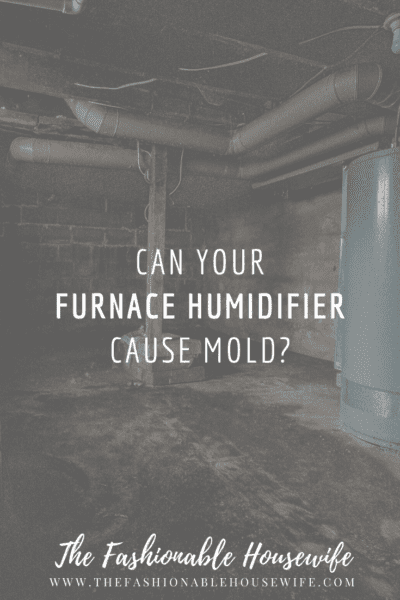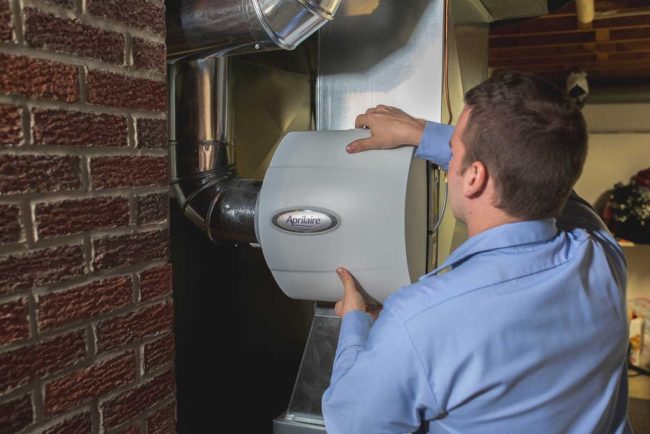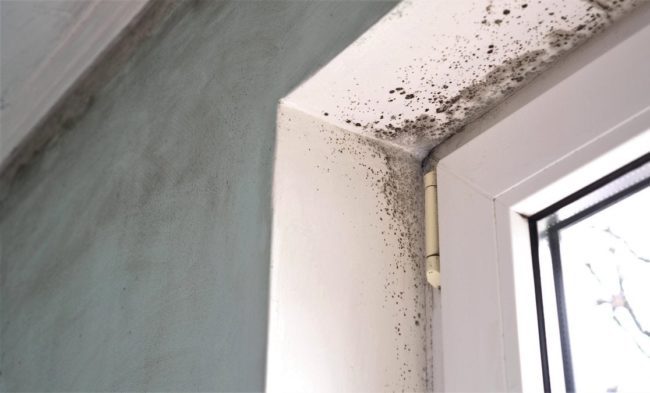
In the cold season, the furnace is a must-have if you want to stay warm inside and resist the freezing cold in most areas of the world. However, it also causes damage on one side, meaning it accentuates the air dryness that is commonly found in winter. To solve this problem, many people choose to install a humidifier for the furnace to add moisture to the air, but their main concern is whether or not this device favors mold to appear in hidden areas of the house.
We have analyzed the issue in-depth and are ready to clarify if mold can be caused by a furnace humidifier.
The perfect air humidity level
Humidity fluctuates according to the temperature inside the house and how often you allow the air to circulate by opening the windows. It’s not ok to let the air become too dry, but neither it is to allow the humidity level to get too high. Usually, at levels under 35%, you will feel uncomfortable because the air will feel too dry. On the other hand, a level higher than 55% will favor mold and germs to develop and spread, and even the objects in your house will be affected. To know the exact level, buy a hygrometer so you will never have to guess how humid or dry the air in your home is. This way, you will prevent the furniture from rotting but you will also protect your health that can be threatened by mold, known to be the fact that multiple respiratory issues are caused or worsened by inhaling mold spores.
Learn about the different types
Returning to our subject, given the fact that the air tends to get too dry in winter, furnace humidifiers are available on the market. They install on the heating system, inside the pipes that conduct the heat, in order to add moisture to the air. Once the hot air is released, it passes through the humidifier and then is spread around the house in order to make the ambiance more pleasant. Depending on your needs and the type of furnace in your home, you can choose from three different types:
- Steam humidifiers: they produce a warm or cool mist, thus being the most efficient in increasing the air humidity. It’s the most versatile and easy to care for type, and the top choice for people concerned about mold, although it has the highest price.
- Flow-through humidifiers: they take the warm air created by the furnace and expose it to a constant flow of water that evaporates in contact with the heat, resulting in a moist air. They include a filter pad that must be replaced once in a while, but the risk of mold is very low as well.
- Drum humidifiers: a belt constantly rotates and passes through a pan of water in order to evaporate when meeting the heat created by the furnace. Due to the standing pan of water, the chances of it creating mold are higher, and maintenance should be performed regularly in order to limit the mold chances. However, the low price makes this type a common choice.
Since water is the main cause of humidity, the mold concerns are, somehow, grounded, when referring to a furnace humidifier. The tight spaces inside the air duct of furnaces are a thriving space for mold spores that don’t need any light in order to replicate. Still, you can keep a mold-free home if you follow some simple cleaning and hygiene rules.

What can you do to prevent the air from getting musky?
The furnace itself can’t become the only factor that favors mold, but it can work with other mold-favoring aspects in your home and the result can be unpleasant. Here are some easy-to-follow steps that can keep you away from mold caused by excessive moisture:
- In order to prevent mold and mildew, make sure you provide enough ventilation in your house, especially in humid areas like the bathroom, kitchen, or basement.
- Clean and replace the filters of the humidifier for furnace, when demanded. A proper maintenance limits to almost zero the chances of mold spores forming and spreading from inside the humidifier or furnace. Some models require monthly maintenance while other furnace air filters should only be checked annually.
- Never turn the furnace on in winter before inspecting it for mold growth inside the pipes. Use a solution made of water, baking soda and vinegar to clean the reachable areas so that you will be certain that it will not spread mold spores when turned on.
- When you cook with boiling water or when you take long and hot baths, you might want to turn off the furnace humidifier, as humidity will be provided from other sources. Again, the hygrometer will be of great help in monitoring the air moisture level.
- Always have the furnace and humidifier installed by a professional who will make sure all the pipes are well sealed in place and the vents are properly working.
- Nonetheless, an air purifier can be of great help in eliminating particles from the air. Along with mold spores, you will also rid the air from dust mites, allergens, or pet dander.
- Dark, tight and humid areas like the basement or the laundry room are the most affected by mold and mildew. In this case, nothing will work better than a crawlspace dehumidifier that is specially designed to reduce air humidity from places where a regular dehumidifier won’t do the job.

Conclusion
Bottom line, humidity is important in both its ways, whether we are talking about a high or low level. In our attempt of achieving the right amount, we can resort to a variety of devices, including the furnace humidifier that, somehow, creates balance in a house during winter. However, excessive or improper use can lead to the opposite, meaning over-moisturizing the air, a situation that can be easily prevented. Don’t give up on your idea of installing a furnace humidifier due to your fear of mold, since you can keep it away from your home and still achieve the perfect temperature and humidity level that will make you feel comfortable.



